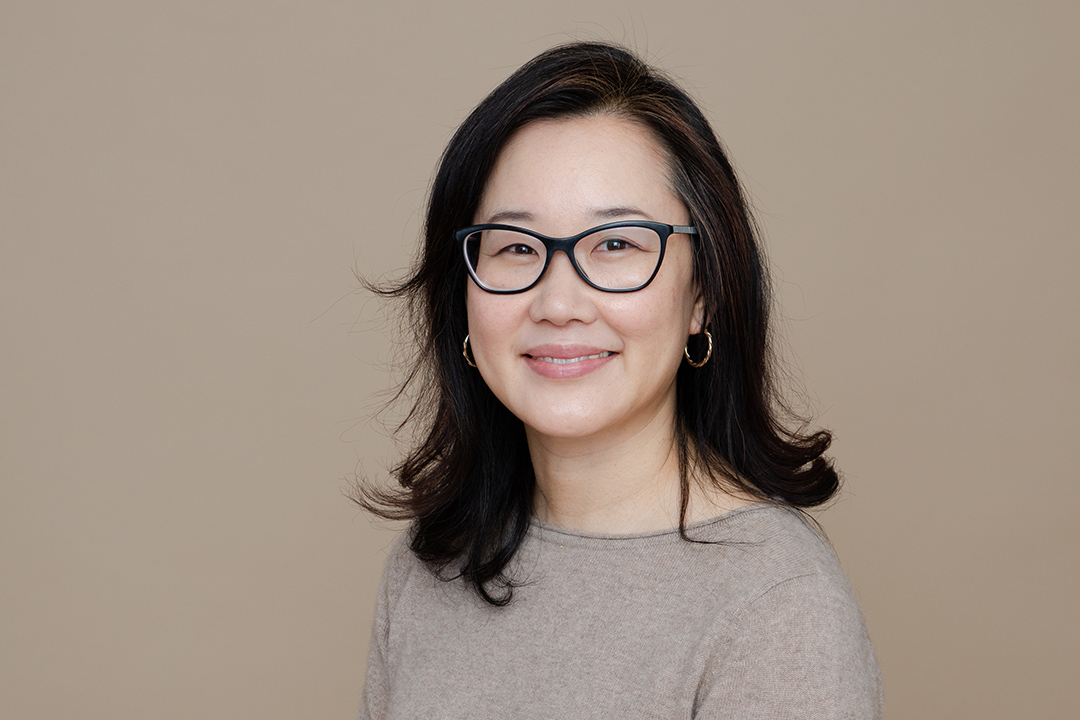
Professor Kim earns USask Master Teacher Award
Dr. Soo Kim’s (PhD) students and colleagues in the School of Rehabilitation Science began calling her a “master teacher” long before she was honoured with the University of Saskatchewan (USask) Fall Master Teacher Award.
By University CommunicationsFor Kim, hearing this news is “just a huge compliment for me, and in some ways it’s a confirmation that I’m on the right track with my teaching. A mental thing that I say, is, ‘OK Soo, you’re on the right track; keep working at it.’”
The Master Teacher Award was established to recognize faculty members who make outstanding contributions to the learning and working environments of the university. Kim will receive the award at the 2022 Fall Convocation celebration on Nov. 9.
Kim’s nominator, Dr. Cathy Arnold (PhD), began working with Kim when she first joined the school in 2008, and shared that Kim “has received numerous awards and grants acknowledging her professional development and leadership.” These include the Women in Philanthropy Award from the Royal University Hospital Foundation, Scholarship of Teaching and Learning Grants from Gwenna Moss Centre, and a Research Excellence Award from the Saskatchewan Physiotherapy Association.
“This impressive scope of acknowledgment demonstrates her far-reaching strength in teaching, learning, communication, and leadership across sectors of academia, community, and profession,” said Arnold.
Kim’s impact extends to students who carry their learning into professional practice. In some cases, those learners have returned to work with her.
“Those students that I taught—maybe 12, 13 years ago—some of them have come back and are working alongside me in teaching labs,” said Kim. “I kind of like to plant the seed that once you get out there and practice, and you get that clinical experience under your belt, you are welcome to come back and contribute to teaching. So, I’ve had a few students in the last few years come back and co-teach with me. So that’s always a proud moment.”
Although Kim takes pride in her teaching, her humility and acknowledgment of her peers shines through.
“I never take the full credit, because I know that I’m just one of many people who have had the privilege of being a part of their journey, but it is a delight to see my previous students go out and soar in different areas of practice,” she said.
Kim’s passion for teaching comes from her own experience.
“When I was a student, I was not a great learner. It wasn’t until first-year university when I met a certain professor who was able to captivate my attention and tap into a strength I didn’t know existed. That, combined with a certain subject matter, that really changed things for me,” said Kim.
The certain subject matter that captured Kim’s attention contributes to the strong connection she sees between teaching and research. She said she is “very grateful that the link between my research and my teaching is very direct. It’s very close in proximity.”
Her passion for research on the “muscular-skeletal system and pathologies to do with the shoulder” led her to the Scholarship of Teaching and Learning (SoTL) as well.
Kim said that includes “developing tools and extra teaching material that tap into that visualization of certain particularly complex structures,” including a “virtual reality platform students can use to review the anatomy of the cervical spine, the neck area, in detail in a virtual environment, which is really cool, and then they get to try out that clinical skill in that virtual environment as well as in a safe environment. This is an exciting project developed with colleagues.”
When asked about advice she might give to a new faculty member starting out teaching, she said, “You need to captivate the student’s attention initially and maintain it along the way. Be gracious to yourself; there will be times it doesn’t go the way you want it to go. Plan ahead as much as possible to keep the stress of research down and balanced so you have energy for teaching.”
“Teaching takes practice,” Kim added. “Practice lectures like you practice a presentation and surround yourself with others who are passionate about teaching, with other supports.”

